One of the more intriguing and complex product categories in the insurance property claims world are Oriental rugs.
These beautiful items have been with humans for an extraordinarily long time. The oldest one in existence is the Pazyryk Carpet dating back to the 5th Century BCE. Remarkably, it was woven using the same basic techniques passed down through the generations to the present day.
In ancient times, a good rug would be considered among one’s most valuable possessions. And although they are much more commonplace now, many are still items of high value and often show up in insurance claims.
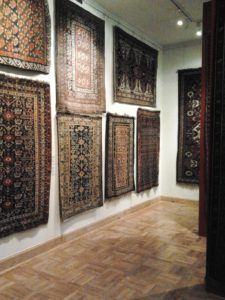
The basic definition of an Oriental rug is a piled or flat woven textile that’s been hand-knotted in one of the traditional weaving areas of the Middle or Far East. The term “oriental rug” was created several centuries ago and it is now mainly used for convenience. Persian rugs are also “Oriental Rugs” but they are made only in Iran (formerly known as Persia). America has its own tradition of hand-woven rugs made by Native Americans in the Southwest.
Common Construction Types: hand-woven, hand-tufted, hand-hooked, machine-made
When appraising an Oriental rug, it is important to first determine the type of construction. Many people would be hard pressed to tell what type of construction their rug uses, much less details about where and when it may have been made. Regardless, these differences can make an enormous difference in appraised value.
Hand-woven rugs are made by a weaver or weavers sitting at a loom and hand-tying individual knots along the weft threads (which run left to right) onto vertical strings called the warp (running top to bottom). These are generally the most expensive and highest quality rugs due to the skill that’s required in making them and the labor that’s involved in processing and dying natural fibers. They are also the most durable.
To date, the most expensive rug ever sold at auction was through Sotheby’s in 2013 – a 17th century Persian carpet that sold for nearly $34 million.
Enservio valued over $900,000 worth of rugs at replacement cost value in just the first four months of this year — and just finished a claim with 18 rugs that combined had a stated value of over $100,000, and a replacement cost value of $48,000.
The key to determining if a rug was hand-woven is to look at the row of knots in the back. While the design and colors match the front, the knots in the back of the rug will not be perfect and the rows will not be even.
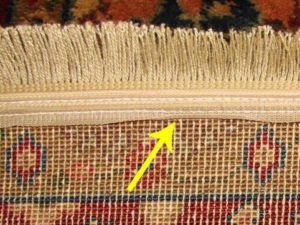
In contrast, machine-made rugs are produced on computer driven looms where hundreds of spindles of fiber are mechanically woven into a mesh backing. In these rugs, the rows of knots in the back will be perfectly uniform, the edges will be straight, and if the rug has a fringe, it will have been sewn or glued on, added as a decorative element to simulate the look of a hand-woven rug. These are also generally made with less expensive, man-made fibers as well as natural fibers.
Other common types of construction are hand-tufted and hand-hooked rugs. These are made using a tool called a tufting gun, where individual threads are punched into a canvass backing to form the pile.
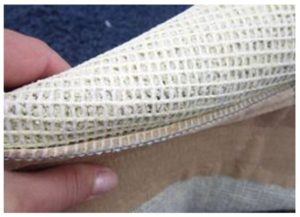
Tufted rugs are sheared or cut to look more like carpet, whereas hooked rugs are left unshorn to form a loop pile. These rugs for the most part have a fabric backing glued to the entire back of the rug to keep the individual fibers in place. Like machine-made rugs these may not have a fringe and if they do, it will have been glued or sewn on. Some tufted rugs are “custom” designed and will have a higher price point than the majority of commercially made rugs.
Tufted rugs are less durable than a machine made rug and when damaged, these rugs are almost always a total loss because the materials used to keep these held together will easily crumble and dry out when exposed to water or heat. There is almost never a restoration option for these types of rugs. These rugs are also often labeled as “hand-made” which can lead consumers to think this is the same as “hand-woven”. The next time you are at a loss looking at a damaged rug, flip a corner over and you may have a much better idea of the construction of the rug than the insured.
There are of course many other construction types for rugs, such as kilims (flat woven rugs), Aubusson needle-points, embroidered pieces and sisal rugs made from a variety of grasses and natural fibers. But the most common types found on claims are those aforementioned.
Key Value Drivers
When determining a rug’s identity and quality, an onsite inspection is the best way to gather comprehensive information but it can also be done using a good set of images and inspection notes. A lot of assessments regarding the rug’s country of origin, age, types of dyes, weave quality, type of construction and construction materials can be deduced from images.
Generally speaking, more expensive rugs will feature more intricate designs using a variety of colors. Many rug patterns are based on traditional designs from specific weaving centers, villages or tribes, so the design also gives a good indication of where a rug may have been woven. However, this is not always the case. For example, not all rugs woven in a Persian-style are necessarily from Iran.
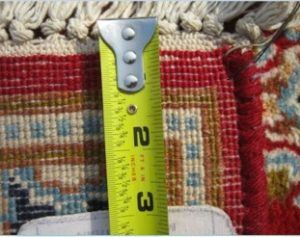
Weave density is another value driver for Oriental rugs. This term applies to hand-woven rugs and refers to the number of knots per square inch (KPSI). In some Persian rugs, this is measured in Raj and Chinese uses a different nomenclature with line counts. The line count is the number of knots in the linear foot measured across the width of the rug.
The best way to record a rug’s knot count is to take a photo of the back side of a rug with a ruler or measuring tape along a row of knots in two directions, parallel to the fringe and perpendicular to the finished edge. A rug’s knot count can range from as little as 15 to as many as 2,500 a square inch.
Images of the fringe and finished edges of an Oriental rug are helpful to determine the country of origin as weavers in different countries use different traditional finishing techniques. The material of the rug, most often cotton but sometimes silk, also contributes to the value.
Being able to confirm those identifying details is crucial to accurately valuing rugs as differences in their price range is measured in thousands of dollars. Recently, we had a claimed rug that was a total loss due to a fire and were asked for a replacement value between $100,000 – $120,000. After we researched the item, we determined it had an actual replacement value of $12,400. The variance was a result of inaccurate submitted information which conflicted with images of the claimed item.
Damage, Tags, and Certificates of Authenticity
It is important to look for damage—color runs, faults or any other clear depictions of problems—within images of an Oriental rug to make determinations about the feasibility of restoration. A hand-woven rug that has tears in localized areas can effectively be repaired with little or no diminution in value.
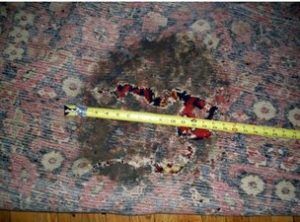
That said, damage to rugs can be difficult to see in images. A shadow may be misperceived for a water stain. Taking good inspection notes as well as pointing to areas of damages with a finger or pen and measuring areas of damage by showing a ruler or measuring tape in photos to highlight specific areas is extremely helpful.
Tags on rugs often have useful information on them such as brand and manufacturer names, materials, and dimensions. Hand-woven rugs will sometimes have an importers tag specifying the country of origin. Not all rugs have these tags but if there is one, it will likely be on the underside of one of the corners.
A rug appraisal or certificate of authenticity can be useful documentation to look for in the appraisal process. However, these documents can be written by both qualified and unqualified people. When an appraisal doesn’t list value-driving details, it is advised to take it with a grain of salt.
The Oriental rug market is largely an uncontrolled market that features a lot of negotiation between buyers and sellers. Tags often have the full list price on them and insureds will submit those as the claimed value. Some buyers, particularly ones who acquired the rug as part of a tour group, may have overpaid by a significant amount.
Given this, it is important to remember the retail replacement value of an Oriental rug is based on specific value drivers – the country of origin, weave quality, design and coloration, materials and age. This value is defined as the amount of money one would expect to spend at a retail establishment to replace a lost, stolen or damaged object at a moment’s notice or an item of like, kind and quality to the claimed item.
 Rosemary Kress is team lead, Rugs and Carpets, as well as a review appraiser, for Enservio, a provider of contents claim management software, payments solutions and inventory and valuation services for property insurers. She can be reached at rkress@enservio.com.
Rosemary Kress is team lead, Rugs and Carpets, as well as a review appraiser, for Enservio, a provider of contents claim management software, payments solutions and inventory and valuation services for property insurers. She can be reached at rkress@enservio.com.
Was this article valuable?
Here are more articles you may enjoy.

 ‘Fearless Girl’ Lawsuit by State Street Settles on Eve of Trial
‘Fearless Girl’ Lawsuit by State Street Settles on Eve of Trial  Maryland Hopes to Rebuild Baltimore Bridge for $1.9B With Insurance, Federal, Other Funds
Maryland Hopes to Rebuild Baltimore Bridge for $1.9B With Insurance, Federal, Other Funds 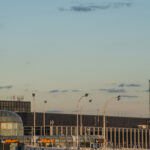 Cracked Airport Columns Aren’t Insured Property Damage, Just Bad Product: Court
Cracked Airport Columns Aren’t Insured Property Damage, Just Bad Product: Court 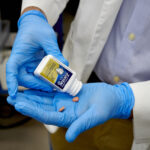 Pfizer Agrees to Settle More than 10,000 Zantac Cancer Suits
Pfizer Agrees to Settle More than 10,000 Zantac Cancer Suits 